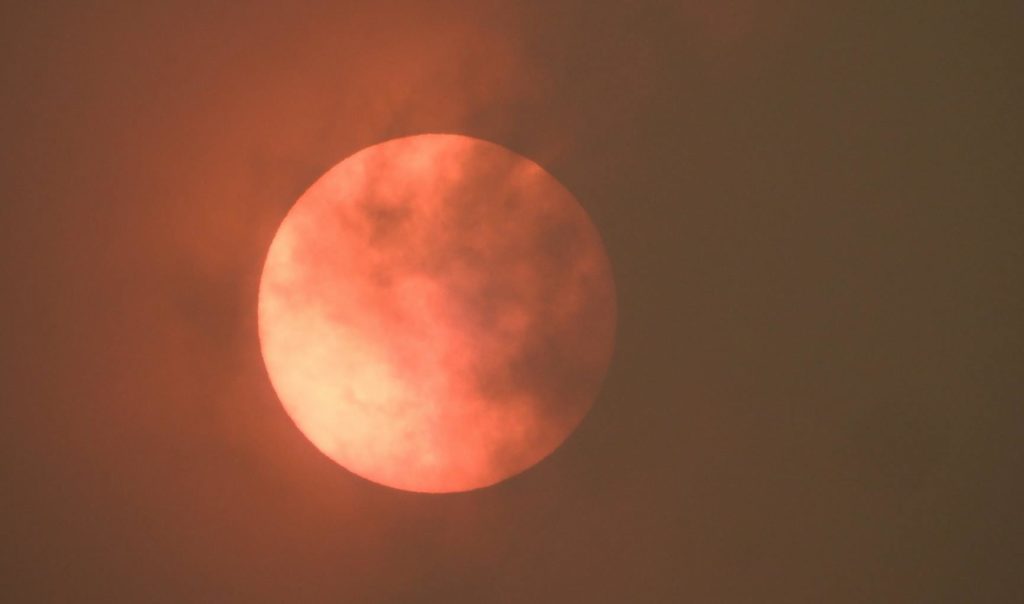

Ophelia and the red sky
Ex-Hurricane Ophelia brought wet weather and gusts exceeding 90 mph to the UK and Ireland on 16th October 2017, the 30th anniversary of the Great Storm of 1987.
The stormy remnants of Ophelia brought windy conditions to many parts, especially northern and western regions, causing widespread damage to infrastructure, uprooting trees, ripping off roofs and causing power outages to 330,000 homes and businesses. Three people were killed in incidents related to the storm, with two being struck by falling trees. It has been declared Ireland’s worst storm on record.
Like many Atlantic storms, Ophelia formed south-west of the Azores, where areas of low pressure often occur – however most systems move towards the Caribbean and the US. In the case of Ophelia however, it was blown northwards. This is unusual but not unprecedented. As it moved northwards from warm, Atlantic waters to the colder waters surrounding Britain it was downgraded, eventually becoming an extratropical storm.
In contrast to the stormy weather bought by ex-hurricane Ophelia, temperatures across large parts of southern and eastern England exceeded 20°C on Monday 16th (the average maximum temperature for England in October is around 14 °C). The high temperatures were partly due to the influence of Ophelia which brought very warm air from Spain on its eastern flank. Those same southerly winds caused another interesting phenomena, as the sun temporarily appeared to change colour.
Across other parts of the UK, observers may have lightheartedly questioned whether an Instagram filter had been applied in real life. Following the passage of ex-hurricane Ophelia, the colour of the sun and the sky turned curiuos shades of orange and red. Southerly winds not only brought warm, tropical air to parts of southern and eastern UK, but also brought dust from the Sahara and smoke particles from forest fires in Spain and Portugal.
These dust and smoke particles located high up in the atmosphere, scattered the shorter wavelength blue light from the sun letting more of the longer wavelength red light through – similar to the phenomenon we sometimes witness at sunrise or sunset. As a result, the sun, and the surrounding sky, appeared a captivating reddish hue.


